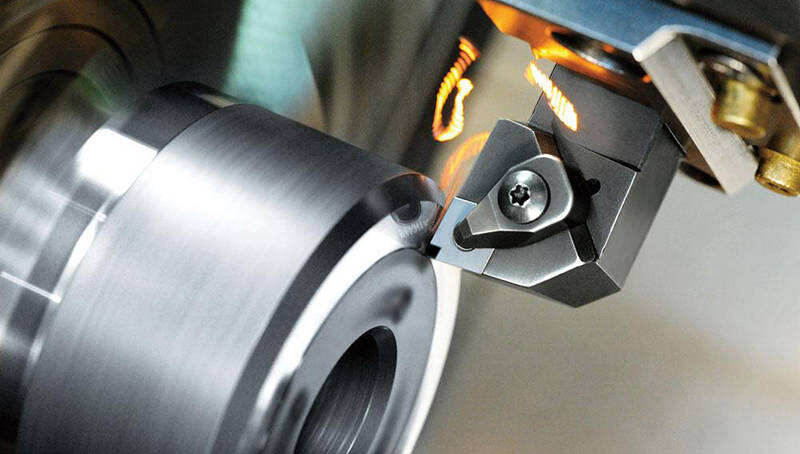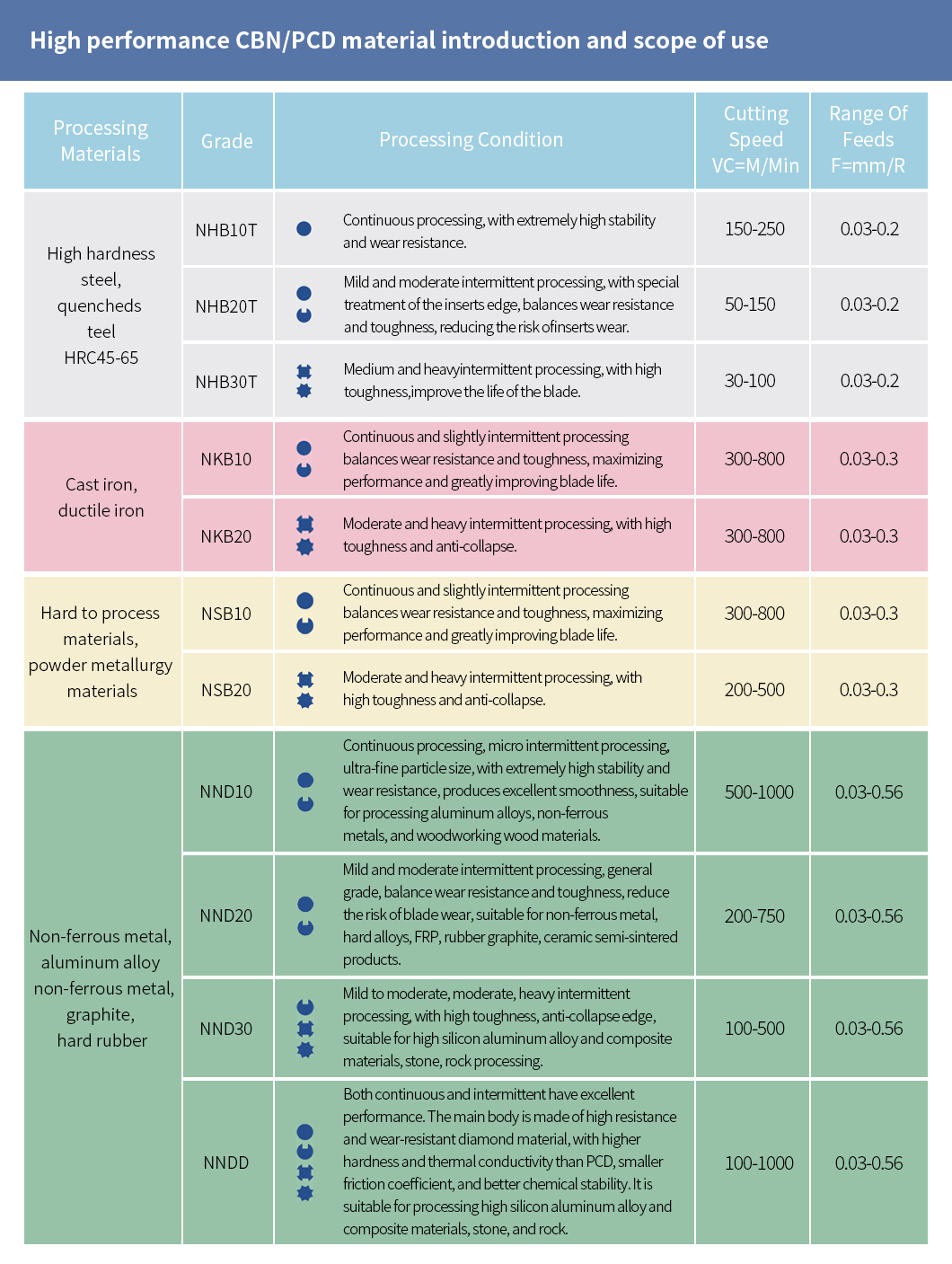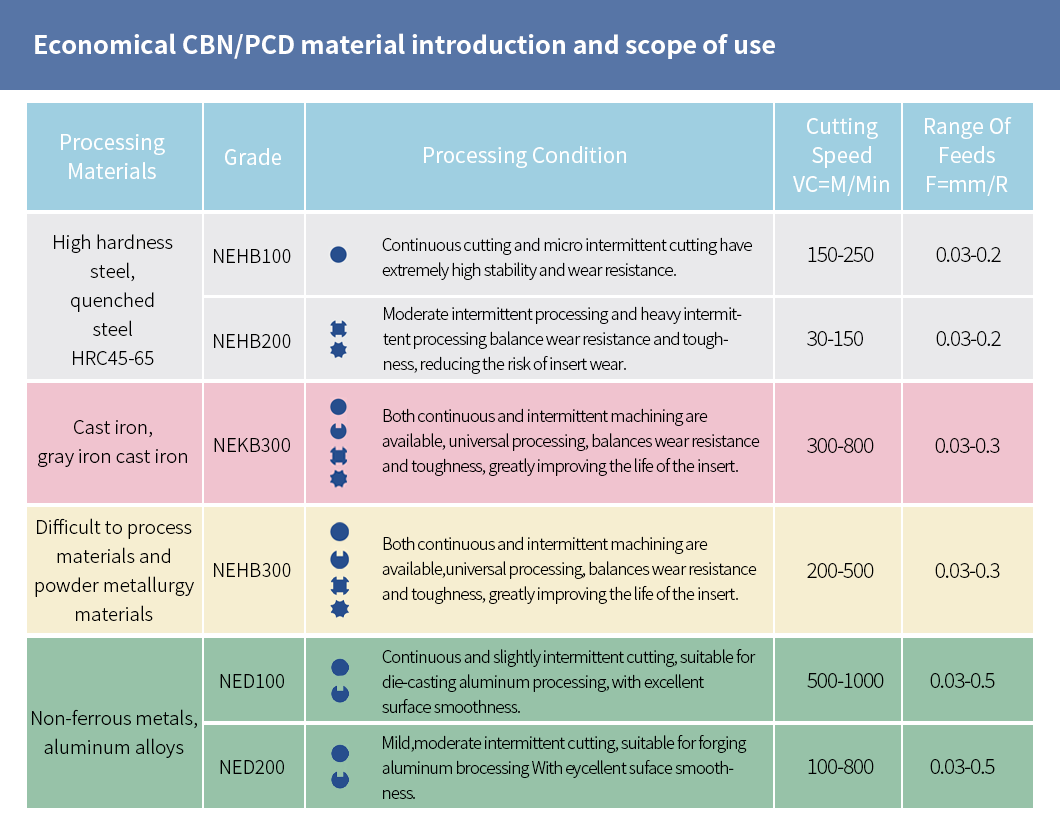
Introduction:
PCD (Polycrystalline Diamond) and CBN (Cubic Boron Nitride) are both types of superhard cutting tool materials, but they have different properties which make them suitable for different applications. Here are the primary differences:
Composition and Hardness:
PCD is one of the hardest known materials, second only to diamond. CBN comes next in hardness. PCD is made by sintering diamond particles with a metal binder at high temperature and pressure, while CBN is made by treating boron nitride at extremely high temperature and pressure.
Application of Use:
PCD inserts are typically used for cutting non-ferrous and non-metallic materials like aluminum, brass, copper, plastic, wood, and rubber. On the other hand, CBN is typically used for cutting hardened steel, cast iron, and other hard ferrous materials.
Heat Resistance:
CBN has high resistance to heat compared to PCD. This makes CBN suitable for high speed machining of ferrous materials which generate high cutting temperatures.
Wear Resistance:
Both insert types have excellent wear resistance, but CBN is more suitable for machining ferrous materials due to its superior hot hardness and chemical stability under cutting conditions.
Cost:
Generally, CBN inserts are often more expensive than PCD. However, the selection should be based on the material to be machined and the specific machining requirements rather than cost alone.
In summary, the choice between PCD and CBN depends largely on the workpiece. If it's a non-ferrous or non-metallic material, PCD would be the suitable choice. However, for hard, ferrous materials, CBN would be more suitable.
| N-High performance CBN inserts | N-Economical CBN inserts |
| TNGA 160402 | TNGA 160402 |
| TNGA 160404 | TNGA 160404 |
| TNGA 160408 | TNGA 160408 |
| TNGA 160412 | TNGA 160412 |
| TNGA 160416 | TNGA 160416 |
Grade Reference:

